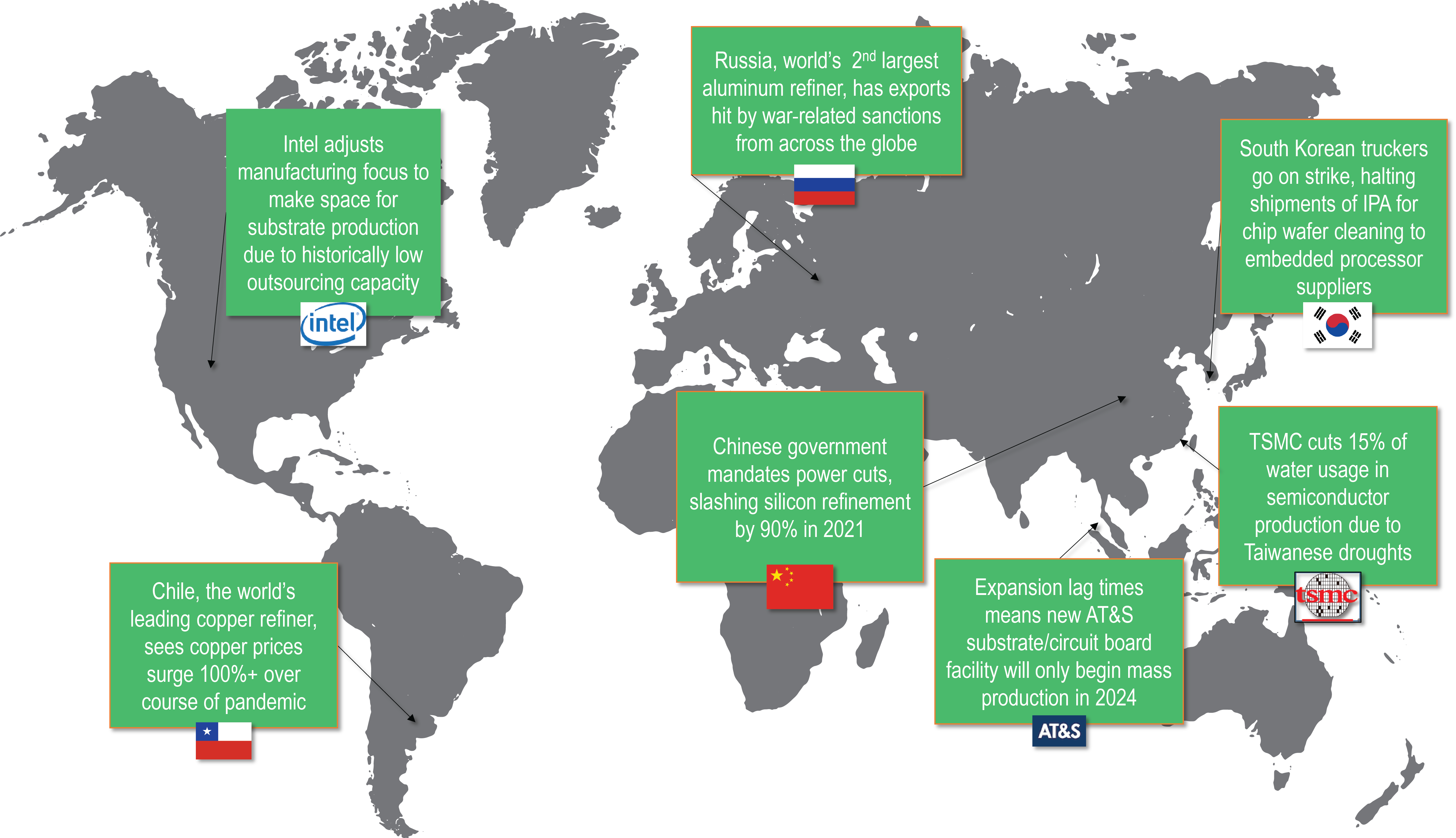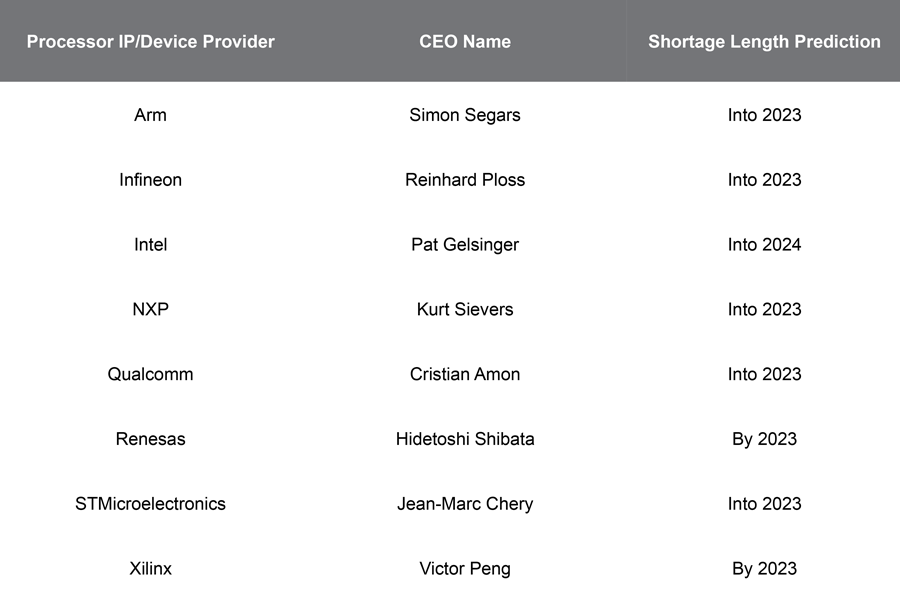IoT & Embedded Technology Blog
Global Chip Shortage will Persist into 2023
by Connor Martins and Dan Mandell | 6/24/2022
The global raw materials and chip shortage continues with us in Q2 2022, exacerbated by a variety of cross-industry issues, geo-political forces, and the economic consequences of a stubborn pandemic. An extreme shortage of semiconductors occurred as a result of spikes in demand for consumer electronics, electric vehicles, sensors, and connected devices in general. Skyrocketing raw materials prices and natural disasters have worsened the situation, forcing embedded processor suppliers to consider tradeoffs involving pricing strategies and severe capacity constraints. As a result, most of the executives of leading embedded processor market players forecast similar semiconductor supply-demand deficits to persist beyond 2022. As the supply chain crisis grows more complicated, so too do its implied solutions, and VDC Research subsequently sees the interrelated chip shortage continuing into 2023.
Rising raw materials prices, particularly those of aluminum, copper, silicon, and steel, are playing a significant role in the supply chain crisis. Aluminum prices surged from March 2020 to March 2022, directly impacting the production costs of capacitors. A combination of China’s radical de-carbonization mandates on manufacturers and severe global sanctions on most Russian exports means that the world’s two largest aluminum refiners are not supplying nearly enough output to satisfy global capacitor demand. Additionally, raw materials like copper and silicon experienced similar price surges over the last two years, subsequently affecting the prices of passive components, PCBs, motherboards, and processors.
While unusually high demand for semiconductors due to work-from-home needs, Bitcoin mining, automotive demand, etc. can be partly blamed for the current shortage, there remains other complex underlying pain points that suppliers continue to grapple with. Consider TSMC, a semiconductor-producing industry titan whose production processes consume approximately 150,000 tons of Taiwanese water per day, an undoubtedly problematic fact in the context of recently persistent droughts in Taiwan. The Taiwanese government has reacted by mandating a 15% cut in TSMC’s industrial water usage, placing a significant capacity constraint on one of the most important global semiconductor producers.
 |
Exhibit 1: Supply Shortage Challenges and Causes |
Many major embedded processor suppliers have expanded semiconductor production capacity in response to increased market demand, but doing so involves substantial lag times in both physical construction and acquiring the right equipment. To make matters worse, many of the machines involved in producing computer chips are, of course, powered by computer chips, presenting yet another hurdle for embedded processor suppliers to consider. For example, AT&S, a designer and manufacturer of PCBs and substrates for embedded processors, is building a new substrate and circuit board factory to help bring down prices of substrates. Unfortunately, the facility is only set to begin mass production in 2024, the common target date for most similar expansions in capacity in the industry.
 |
Exhibit 2: Embedded Processor Ecosystem CEOs’ Expectations for Supply Shortage Length |
Despite the bleakness of the outlook for the semiconductor shortage, there is light at the end of the tunnel. By the end of 2021, many embedded processor suppliers and other relevant industry players had increased budgeting towards CAPEX—a real indication of a willingness to invest and meet surging demand for embedded semiconductors. Nonetheless, we believe the chip shortage will persist into 2023 primarily due to the time constraints on increasing semiconductor capacity against a background of economic and geopolitical uncertainty.
VDC’s upcoming report, IoT, Embedded & Mobile Processors, will provide semiconductor technology providers and others in the ecosystem with the insight needed to navigate this market and maximize their opportunities in a time of dramatic and rapid change.